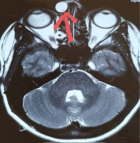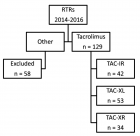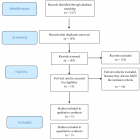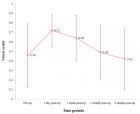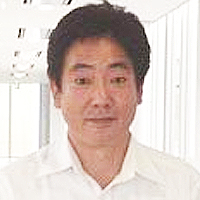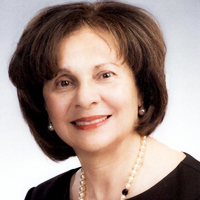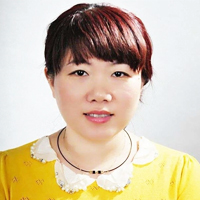Abstract
Research Article
Peculiarities of photon emisson of whole non-diluted human blood obtained from healthy donors and patients with some diseases
Kirill N Novikov*, Vladimir L Voeikov, Ekaterina V Buravleva and Nadezhda G Berdnikova
Published: 31 December, 2018 | Volume 2 - Issue 1 | Pages: 013-019
Blood plays an important role in oxygen absorption and its transfer to organs and tissues in vertebrates, as well as in a number of invertebrate species. Numerous interactions between cellular and non-cellular blood components constantly occur. A special role in these interactions belongs to erythrocytes and leukocytes, between which oxygen is constantly exchanged and activated, which we showed directly in whole blood. Blood is a liquid tissue, which is a complex cooperative system and has many inherent functions and the most important one is the ability to maintain the homeostasis of the body. Our experience has shown that despite its high optical density, undiluted blood of humans and animals can be a source of radiation due to the transformation of the energy of electron-excited (EEE) states and secondary processes occurring in the whole blood system. Parameters of this radiation - ultra-weak photons emission (UWPE) from blood - depend upon its physiological properties and reflect the physiological state of a donor. Analysis of UWPE from non-diluted blood is a simple and sensitive method that allows to monitor the course of treatment of a patient. In spite of high opacity of non-diluted blood it may be a strong source of UWPE both in the presence and absence of UWPE enhancers. Analysis of patterns of UWPE from blood reveals its highly non-linear, stable non-equilibrium and cooperative properties. Characteristic of a living system.
Read Full Article HTML DOI: 10.29328/journal.jprr.1001009 Cite this Article Read Full Article PDF
Keywords:
Whole non-diluted blood; Chemiluminescence; Photon emission; Luminol; Lucigenin; Respiratory burst; Reactive oxygen species; Non-radiative energy transfer; Angina pectoris; Chronic obstructive pulmonary disease.
References
- Voeikov VL, Novikov CN, Vilenskaya ND. Low-level chemiluminescent analysis of nondiluted human blood reveals its dynamic system properties. J Biomed Opt. 1999; 4: 54-60. Ref.: https://goo.gl/UL1Mw8
- Voeikov VL. Reactive Oxygen Species (ROS): Pathogens or Sources of Vital Energy? Part 1. ROS in Normal and Pathologic Physiology of Living Systems. J Altern Complement Med. 2006’ 12: 111-118. Ref.: https://goo.gl/119vXP
- Voeikov VL, Asfaramov R, Bouravleva EV, Novikov CN, Vilenskaya ND. Vilenskaya N.D. Biophoton research in blood reveals its holistic properties. Indian J. Exp. Biol., 2003; 43: 473-482. Ref.: https://goo.gl/VQhwD3
- Voeikov VL, Novikov CN, Siuch NI, Alterations in Luminol-enhanced CL from nondiluted whole blood in the course of low-level laser therapy of angina pectoris patients. In: Cohn, G.E, Soper, S.A., eds. Ultrasensitive Biochemical Diagnostics II, SPIE Proc. 1997; 2985: 286-294. Ref.: https://goo.gl/wRtsFZ
- MacNee W, Tuder RM. New Paradigms in the Pathogenesis of Chronic Obstructive Pulmonary Disease. Proceedings of the American Thoracic. Society. 2009; 6: 527-531. Ref.: https://goo.gl/z7NVkw
- Skyba P, Kluchova Z, Joppa P, Petrasova D, Tkacova R. Nutritional status in relation to respiratory impairment and systemic inflammation in patients with acute exacerbations of COPD. Med Sci Monit. 2009; 15: 528-533. Ref.: https://goo.gl/AbJRQD
- Cavalcante AGM, de Bruin PFC. The role of oxidative stress in COPD: current concepts and perspectives. J Bras Pneumol. 2009; 35: 1227-1237. Ref.: https://goo.gl/EGueDW
- Smirnov VS, Kuzmich MK. Hypoxen. St. Petersburg-Moscow, 2001 (in Russian).
- Novikov KN, Berdnikova NG, Novikov AK, Lyusina OY, Muhitova OG, et al. Changes in chemiluminescence of whole blood of COPD patients treated with Hypoxen® and effects of C60 fullerenes on blood chemiluminescence. Med Sci Monit. 2012; 18: 76-83. Ref.: https://goo.gl/twDphn
- Zhuravlev AI. Ed. Biochemiluminescence, USSR Acad. of Sci. and Moscow Soc., Nature. 1983; 58: 210-222.
- Vladimirov YA. Sherstnev MP. Chemiluminescence of living cells, Moscow, VINITI Publ. House, Series “Biopysics”, 1989; 24.
- Cadenas E. Biological chemiluminescence, Photochem. Photobiol. 1984; 40: 823-830, 1984. Ref.: https://goo.gl/UBE3GZ
- Bochev BG, Magrisso MJ, Bochev PG, Markova VI, Alexandrova ML. Dependence of whole blood luminol chemiluminescence on PMNL and RBC count. J Biochem Biophys Methods. 1993; 27: 301-309. Ref.: https://goo.gl/VweNJK
- Kaever V, Robitzsch JT, Stangel W, Schleinkofer L, Resch K. Simultaneous detection of whole blood chemiluminescence in microtitre plates. Eur J Clin Chem Clin Biochem. 1992; 30: 209-216. Ref.: https://goo.gl/wJLC4x
- Descamps-Latscha B, Nguyen AT, Golub RM, Feuillet-Fieux MN. Chemiluminescence in microamounts of whole blood for investigation of the human phagocyte oxidative metabolism function. Ann Immunol (Paris). 1982; 3: 349-364. Ref.: https://goo.gl/LSX3mS
- Murphy ME, Sies H. Visible-range low-level chemiluminescence in biological systems. Methods Enzymol. 1990; 186: 595-610. Ref.: https://goo.gl/a6qMCr
Figures:

Figure 1

Figure 2

Figure 3

Figure 4

Figure 5

Figure 6

Figure 7
Similar Articles
-
Current Practices for Severe Alpha-1 Antitrypsin Deficiency Associated COPD and EmphysemaMJ Nicholson*, M Seigo. Current Practices for Severe Alpha-1 Antitrypsin Deficiency Associated COPD and Emphysema. . 2024 doi: 10.29328/journal.jprr.1001058; 8: 044-047
Recently Viewed
-
Non-surgical Treatment of Verrucous Hyperplasia on Amputation Stump: A Case Report and Literature ReviewSajeda Alnabelsi*, Reem Hasan, Hussein Abdallah, Suzan Qattini. Non-surgical Treatment of Verrucous Hyperplasia on Amputation Stump: A Case Report and Literature Review. Ann Dermatol Res. 2024: doi: 10.29328/journal.adr.1001034; 8: 015-017
-
Investigating Anti-Bacterial and Anti-COVID-19 Virus Properties and Mode of Action of Pure Mg(OH)2 and Copper-infused Mg(OH)2 Nanoparticles and Coated Polypropylene SurfacesSaleh Alkarri*, Melinda Frame, John Cairney, Lee Maddan, Jin H Kim, Jonathan O Rayner. Investigating Anti-Bacterial and Anti-COVID-19 Virus Properties and Mode of Action of Pure Mg(OH)2 and Copper-infused Mg(OH)2 Nanoparticles and Coated Polypropylene Surfaces. Int J Clin Virol. 2024: doi: 10.29328/journal.ijcv.1001057; 8: 008-023
-
A Low-cost High-throughput Targeted Sequencing for the Accurate Detection of Respiratory Tract PathogenChangyan Ju, Chengbosen Zhou, Zhezhi Deng, Jingwei Gao, Weizhao Jiang, Hanbing Zeng, Haiwei Huang, Yongxiang Duan, David X Deng*. A Low-cost High-throughput Targeted Sequencing for the Accurate Detection of Respiratory Tract Pathogen. Int J Clin Virol. 2024: doi: 10.29328/journal.ijcv.1001056; 8: 001-007
-
About Efficiency of High-order Harmonic Generation in Attosecond PhysicsAng-Yang Yu*. About Efficiency of High-order Harmonic Generation in Attosecond Physics. Int J Clin Virol. 2024: doi: 10.29328/journal.ijcv.1001061; 8: 045-047
-
Coronaviruses have reached at Pre-elimination Stage with Nine Amino Acid Spike Deletions and Forty-nine Nucleotide 3’-UTR DeletionsAsit Kumar Chakraborty*. Coronaviruses have reached at Pre-elimination Stage with Nine Amino Acid Spike Deletions and Forty-nine Nucleotide 3’-UTR Deletions. Int J Clin Virol. 2024: doi: 10.29328/journal.ijcv.1001060; 8: 031-044
Most Viewed
-
Evaluation of Biostimulants Based on Recovered Protein Hydrolysates from Animal By-products as Plant Growth EnhancersH Pérez-Aguilar*, M Lacruz-Asaro, F Arán-Ais. Evaluation of Biostimulants Based on Recovered Protein Hydrolysates from Animal By-products as Plant Growth Enhancers. J Plant Sci Phytopathol. 2023 doi: 10.29328/journal.jpsp.1001104; 7: 042-047
-
Sinonasal Myxoma Extending into the Orbit in a 4-Year Old: A Case PresentationJulian A Purrinos*, Ramzi Younis. Sinonasal Myxoma Extending into the Orbit in a 4-Year Old: A Case Presentation. Arch Case Rep. 2024 doi: 10.29328/journal.acr.1001099; 8: 075-077
-
Feasibility study of magnetic sensing for detecting single-neuron action potentialsDenis Tonini,Kai Wu,Renata Saha,Jian-Ping Wang*. Feasibility study of magnetic sensing for detecting single-neuron action potentials. Ann Biomed Sci Eng. 2022 doi: 10.29328/journal.abse.1001018; 6: 019-029
-
Pediatric Dysgerminoma: Unveiling a Rare Ovarian TumorFaten Limaiem*, Khalil Saffar, Ahmed Halouani. Pediatric Dysgerminoma: Unveiling a Rare Ovarian Tumor. Arch Case Rep. 2024 doi: 10.29328/journal.acr.1001087; 8: 010-013
-
Physical activity can change the physiological and psychological circumstances during COVID-19 pandemic: A narrative reviewKhashayar Maroufi*. Physical activity can change the physiological and psychological circumstances during COVID-19 pandemic: A narrative review. J Sports Med Ther. 2021 doi: 10.29328/journal.jsmt.1001051; 6: 001-007

HSPI: We're glad you're here. Please click "create a new Query" if you are a new visitor to our website and need further information from us.
If you are already a member of our network and need to keep track of any developments regarding a question you have already submitted, click "take me to my Query."







